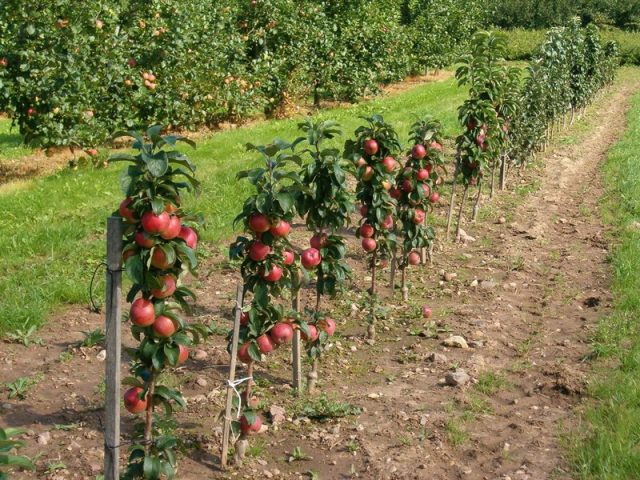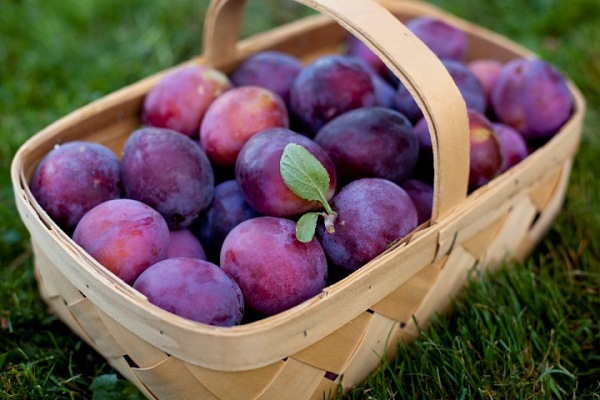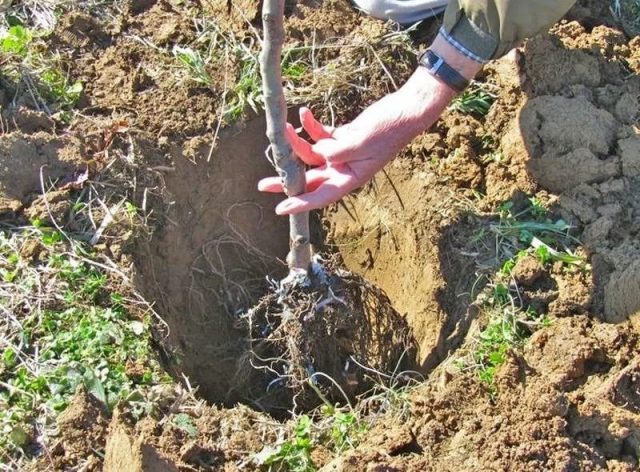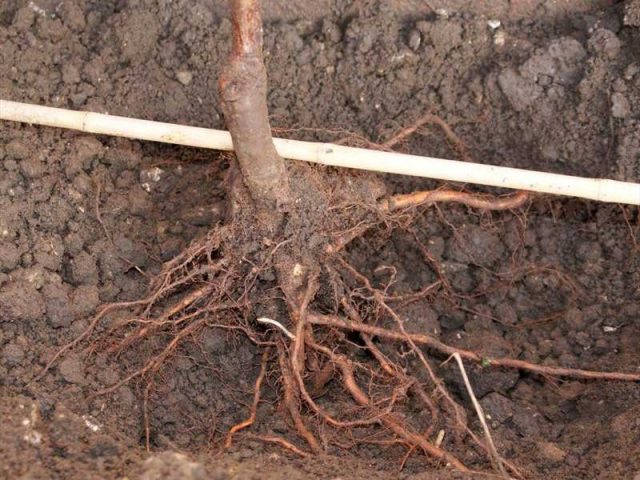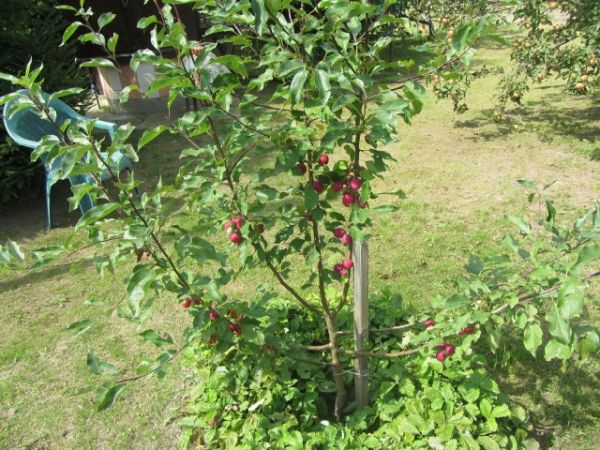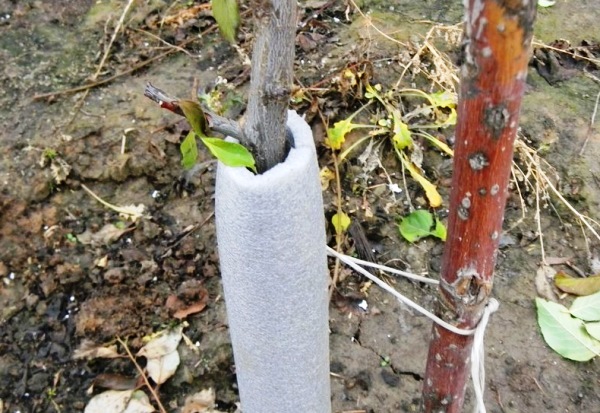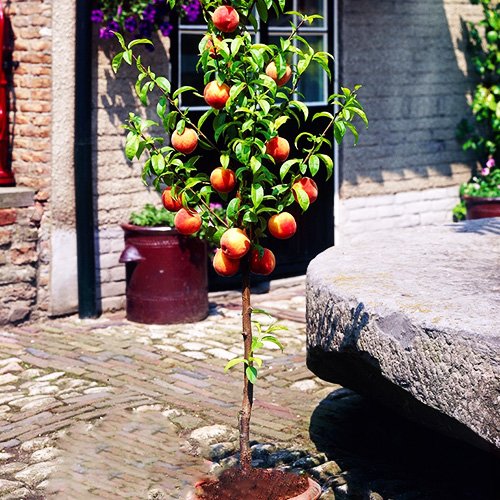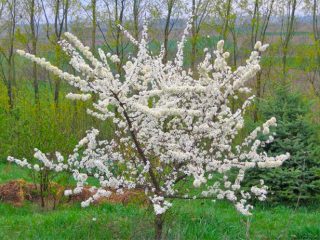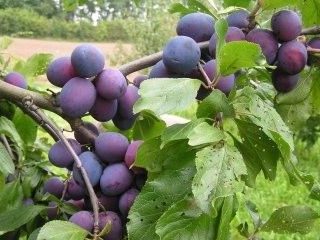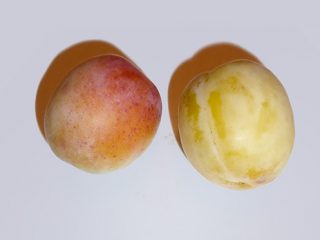Content
Blue Sweet plum is a columnar fruit tree variety that appeared in the history of breeding not so long ago. The successful direction chosen by summer residents and selectors has borne fruit. In general, Blue Sweet plum is undemanding and unpretentious in care, and its fruits win the hearts of many people. However, even here, in order to get a rich harvest, there are some secrets of farmers.
Breeding history of the variety
Interestingly, the first columnar plums were born randomly. This is not the result of selectors. In the middle of the last century, an American breeder saw strange branches on the Macintosh apple tree, but which were located unknown fruits. The crown was thicker, grew upward, and did not fall off, like the rest of the apple tree branches.
The scientist decided to tackle these fruits by multiplying them - within 2 years he bred a new variety of the unknown fruit. After a while, a columnar apple tree Leader appeared. Since then, they began to create the same pears and plums. They are not considered to be genetically engineered or genetically modified. The tree column is considered a natural mutation that has multiplied and multiplied thanks to humans. This is an artificial variety, which is what the Blue Sweet plum is.
It grows in cold and warm countries. Plum columnar Blue Sweet in Siberia is especially widespread, since there are few fruit trees that generally grow there for a whole year. The preferred place for growing the columnar variety is considered to be the northern and western parts of Russia.
Description of plum variety
The peculiarity of the columnar Blue Sweet plum is that it has almost no side branches. The crown is directed upwards, not spreading, does not create a shadow. Therefore, gardeners do not cut it off, do not form a crown - it is convenient, since the density and density of the crop sometimes depends on this process. In addition to the central twig, there are spears - small processes up to 15 cm in length. The smallest of them are 2-3 cm in size. They have a sharp ringed shape. Rings and buds appear here every year - the place of the future harvest.
Seedlings of the columnar variety of Blue Sweet plum are more expensive than ordinary ones, but they quickly pay off - in just 2-3 years, the yield allows you to plant a whole garden (from a material point of view). Columnar flowering begins immediately after planting. In the first year, the tree grows stronger, grows, and in the second year it bears the first fruits. The maximum age of the Blue Sweet columnar plum is 18-20 years. During this time, one tree gives a maximum yield, and then it declines. You can replace it or leave it as a decoration in the garden.
The fruits of the columnar plum variety Blue Sweet differ in their size. The weight of one fruit is 80-100 g, which is impressive even for experienced growers. They are purple, even, sometimes blackish shades can be found. Oval plums have no analogues - their pulp is juicy, hidden under a thick skin, the coating is dense, almost indelible. Inside, the columnar plum variety has a pale pink hue, uncharacteristic for other varieties of plum in the middle strip.Juicy to taste, especially near the peel, sweet and sour, can be stored for a long time at natural room temperature.
Variety characteristics
Particular attention should be paid to the top of the tree. It can freeze slightly, as a result of which the yield is weak. To restore fruiting, you need to cut off flowering in the first years of the tree's life. If the Blue Sweet plum blooms in the first year of life, you must also remove the flowers so that the tree gives a large harvest.
Drought resistance, frost resistance
The columnar variety Blue Sweet is frost and drought resistant. However, during the frost period, you need to carefully monitor the top of the plum. In the summer heat, it is necessary to water the plum more often. Then she will be tall - up to 2.2 m in height. It will also be interesting to watch the video about leaving:
Blue Sweet Columnar Plum Pollinators
Plum of this variety cannot be pollinated on its own. Therefore, we need pollen of varieties of non-columnar plums or similar to it - Stanley, Blue Free. And pollinating bees are needed as carriers, so you should take care of the apiary if insects are not found nearby.
Productivity and fruiting
The Blue Sweet plum blooms in the first year, but it is better to wait for the second so that the harvest is better. The first fruits can be seen in August. One young plum first gives 15-16 kg of harvest, which is not a lot. An adult pyramidal tree of the columnar variety produces three times the yield. It takes up little space, so it is convenient to plant several plums next to each other.
Scope of berries
The cultivation of the Columnar Blue Sweet plum is possible at home for personal consumption, as well as in industry - for processing and subsequent conservation for export.
Disease and pest resistance
The columnar variety of Blue Sweet plum practically does not get sick. Rodents and fungal infections are not afraid of him. This is a great advantage, because it is not picky about care.
Advantages and disadvantages of the variety
This variety of columnar plum always bears a lot of fruits, the harvest is rich and good. Qualitative properties do not change during the entire fruiting period.
From the first year it can bear fruit, blooms quickly, takes root well in new places. During transportation, it does not change the presentation, does not deteriorate as quickly as other varieties of columnar fruits.
Landing features
The seedling of the first year should be planted in the spring, when the ground is not frozen, but not warmed up to maximum temperatures. The subsequent planting and care of the Blue Sweet plum is simple - follow the rules of agricultural technology and monitor the condition.
Recommended timing
The best time for planting the Blue Sweet plum variety is spring. After the snow melts, you need to wait until the ground thaws. Only within 1-2 weeks you need to plant trees, do not tighten it.
If, nevertheless, disembarkation took place in the fall, the drain must be installed in a slope so that the snow completely covers its crown and trunk.
Choosing the right place
In order for the plum to take root in a new place, it must be prepared in a clay solution. The soil in the garden must be fertile - this is a prerequisite, since organic matter and mineral fertilizing are dangerous for a young seedling. If other trees need it, then the columnar variety of Blue Sweet plum is completely dependent on the soil and its quality.
Plum root system weak, since the variety was bred by humans, and not as a result of crossing species. Small plums are planted 5 m apart.
You need to feed the seedlings 3 times a year, preferably with urea. Watering is arranged as follows:
- 10 liters for a large plum (large).
- 30 liters per shallow sink.
- Adult plums, not seedlings, are watered twice a year.
After budding, the Blue Sweet plum variety is fed for the first time, then after 2-3 weeks. The last feeding is carried out another 3 weeks after the second.
What crops can and cannot be planted nearby
Pollinators are planted nearby, as well as Imperial. This is a variation of the Blue Sweet plum variety that just looks good. It helps to grow, although it is not a pollinator. The root system between trees can mix to produce juicier and sweeter fruits.
Selection and preparation of planting material
Before planting a columnar plum, you need to choose a seedling. It should be one-year-old in order to better take root in the new land. A limit should be set between the rows - one and a half or two meters. The hole should be doubled in size relative to the roots.
Landing algorithm
For a columnar seedling, you need to dig a 40 x 50 or so hole. It all depends on the size of the root system.
Columnar plum Blue Sweet varieties love fertilization, but you should not be especially zealous. From mineral fertilizers, you can take 100 g of supersulfate. Potassium for soil is sufficient in the amount of 80-90 g.
Humus will also be needed - only 3 kg for each columnar plum. On the day of preparation of the columnar drains, you need to "fill" the pit. After installation, they are watered in three passes so that there is enough moisture for a week. From above, the soil is not covered with humus, leaving the moat empty.
Plum follow-up care
Further, this variety of columnar plum does not need care. Only in summer and autumn is top dressing needed. So the plants will receive the necessary nutrients.
The columnar plum should receive maximum heat in the first two years of life, so before winter you need to take good care of this moment. They wrap the trunk with fresh snow, and also wrap it with straw, hay or other warm materials. This will help protect the plum from pests, which are especially active in winter.
Diseases and pests, methods of control and prevention
This columnar plum is resistant to disease and pests if properly cared for. But it is better to treat it with preparations for fungal infections during the winter so that the harvest is of high quality and edible. And by spraying in the spring, you can increase the yield.
Conclusion
Plum Blue Sweet is considered a difficult crop, but does not require significant maintenance. In the first years of her life, she loves warmth, after which she can grow even in Siberian frosts. In the summer you need to water to preserve the properties of fruiting.

